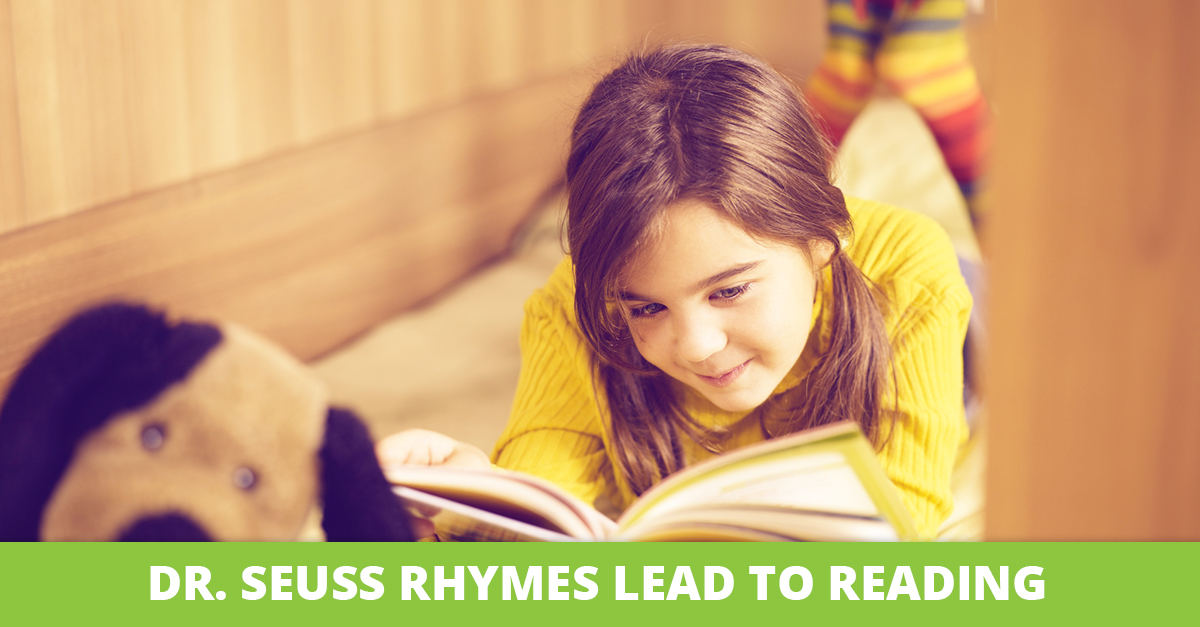Dr. Seuss Rhymes Lead to Reading
Posted in Homeschool View on Wednesday, March 6, 2013
 Between the ages of three and five, most youngsters go through a burst of creative expression, marked by nonsense words and silly songs culled from their imaginations and daily lives. For parents, this is an especially fun phase in a child’s development. To cultivate your youngster’s blossoming creativity, celebrate National Reading Month this March and take a cue from the master of wacky words, Dr. Seuss.
Between the ages of three and five, most youngsters go through a burst of creative expression, marked by nonsense words and silly songs culled from their imaginations and daily lives. For parents, this is an especially fun phase in a child’s development. To cultivate your youngster’s blossoming creativity, celebrate National Reading Month this March and take a cue from the master of wacky words, Dr. Seuss.
What’s a wocket? And how did it get in my pocket? Decades of children have grown up with zamps in lamps, jertains behind curtains, and nooth grushes in toothbrushes. Despite some critics’ contention that Seuss is simply too silly to take seriously, rhyming actually teaches kids to spell and recognize words, leading to reading.
“Research has proven that rhyme is crucial to learning how to read. With some beginning readers, including those with dyslexia, teaching reading through rhyme works better than phonetics,” said LiveScience writer Stephanie Pappas in her article, “Oh, the Places You’ll Go with Seuss’ Rhymes in Tow.”
Rhyming first helps children develop phonemic awareness and realize that words are composed of separate sounds (phonemes). Children can then group rhyming words by listening to the similarities of the endings.
Take, for example, this passage from Fox in Sox:
“When beetles fight these battles in a bottle with their paddles
and the bottle’s on a poodle and the poodle’s eating noodles
they call this a muddle puddle tweetle poodle beetle noodle bottle paddle battle.”
In two couplets, Seuss fit in four separate sets of rhymes (battles/paddles, poodle/noodles, muddle/puddle, tweetle/beetle), two of which are repeated.
“Once a child understands that words share segments of sounds (mock, rock, sock), he can grasp through studying rhymes that these words also share spelling sequences. Learning to read one new word, therefore, leads to learning several more,” said Usha Goswami, Director of the Centre for Neuroscience in Education at Cambridge University.
To make the most of rhymes, try these five tips from Karen Whiting in her article “How Rhymes Help Children Learn.”
1. Teach them to a child one line at a time.
2. Have fun adding motions and enjoying the rhyme.
3. Appreciate the child's efforts and successes at repeating the words.
4. If a child has difficulty, try having him or her simply echo the last word of each line.
5. After learning a rhyme, chat about the words that sound alike and what other words sound similar.
So the next time your little one reaches for The Cat and the Hat or Green Eggs and Ham, read it knowing that your child is processing far more than silly tongue-twisters.
Seuss gave his audience just what they need:
Sing-song-y rhymes that help kids learn to read!
Top 10 Dr. Seuss Books
1. Mr. Brown Can Moo! Can You?
2. How the Grinch Stole Christmas!
3. Dr. Seuss’ ABC
4. One Fish, Two Fish, Red Fish, Blue Fish
5. The Cat in the Hat
6. Green Eggs and Ham
7. Oh, the Places You’ll Go
8. Hop on Pop
9. Fox in Socks
10. Horton Hears a Who!
What’s your child’s favorite Dr. Seuss book? What other books do you recommend for rhyming?
Comments(0 comments)